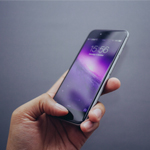 Smartphones and tablets now account for over 60 percent of all smart connected consumer devices, according to IHS Markit. That’s up from 17 percent in 2008. The market research provider predicts that the global smartphone base will rise from 4 billion in 2016 to more than 6 billion by 2020.
Smartphones and tablets now account for over 60 percent of all smart connected consumer devices, according to IHS Markit. That’s up from 17 percent in 2008. The market research provider predicts that the global smartphone base will rise from 4 billion in 2016 to more than 6 billion by 2020.
In addition, the number of individuals using messaging and communications apps, e.g. Line and Whatsapp, will increase from 5 billion to 7.5 billion over the period, IHS Markit highlights in a news release.
“Mobile innovations, new business models and mobile technologies are transforming every adjacent market as the mobile industry diversifies from the maturing smartphone market,” said Ian Fogg, director at IHS Technology. “Revenues for smartphones shipped in 2020 will total $355 billion.”
Global Smartphone Base
Having replaced the personal computer as the most important digital computing device, the smartphone will be universally adopted, paving the way for the advent of smart, connected products and services that will transform the way people live and work and the way organizations function, Fogg continued. “Mobile devices and services are now the hub for people’s entertainment and business lives, as well as for communication. The smartphone has replaced the PC as the most important smart connected device.”
Drilling down, IHS Markit epxects spending on mobile apps will increase from $54 billion in 2016 to $74 billion by 2020.
Increasing smartphone penetration will lead to an increase in the number of addressable smartphones equipped for mobile payments and m-commerce from some 2.7 billion in 2016 to more than 5 billion by 2020.
“Mobile payments and commerce are central to mobile innovation and will be critical for future growth,” Kent commented in the news release. “Mobile money services have been a vital tool for financial inclusion in emerging markets, but elsewhere, mobile money services are looking to complement or disrupt traditional payments and financial services through the launch of app-only banking services, device-based payments from services such as Apple Pay, Android Pay and Samsung Pay, and payment integration via social media and messaging apps.”
Meanwhile, messaging apps and other low-cost forms of communication are eating into telecom companies traditional business lines. Plans to expand app functionality further threaten traditional telecom providers, IHS Markit points out.
Photo by Oliur Rahman https://unsplash.com/@ultralinx

